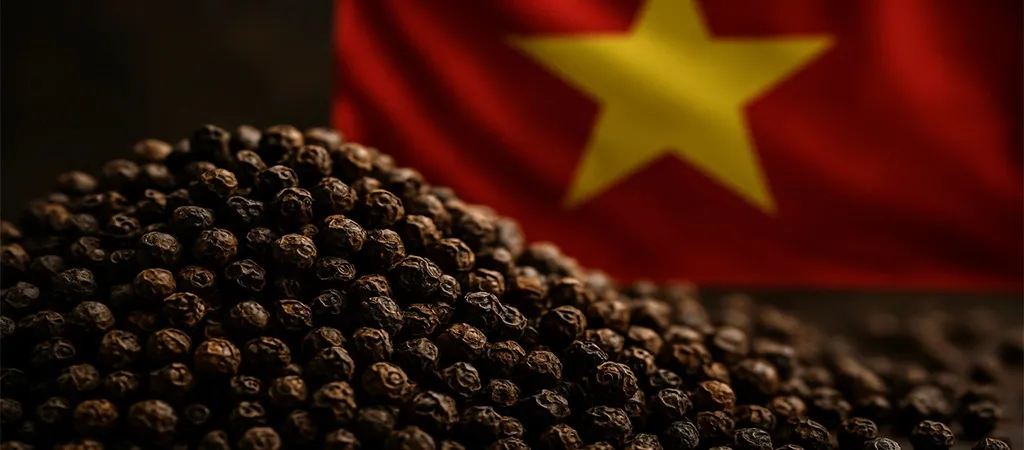India Now #1 in Coconut Production and Vietnam’s Coconut Boom: Exports Up 61%—Is China the Next Mega Buyer?
From the Philippines’ ambitious planting campaigns to India’s position as the world’s leading coconut producer, the global coconut industry is poised for significant developments in 2025. Desiccated coconuts, coconut oil, and other value-added products are gaining traction amid expanding acreage, new market agreements, and evolving consumer trends. Below is a comprehensive market update featuring production forecasts, key exporters and importers, product quality notes, harvest timelines, pricing insights, and future signals.

1. Latest Market Updates & News
A. Philippines and Sri Lanka Plan Major Planting Campaigns
- Sri Lanka: Aims to plant 2.5 million coconut palms in 2025. This expansion could boost global supply but may introduce short-term volatility as newly planted trees reach maturity.
- Philippines: The Philippine Coconut Authority (PCA) is rolling out a large-scale planting initiative in Davao, designed to bolster production of desiccated coconuts and copra. A newly announced factory by Thai Coconut Public Company Limited will drive additional demand for local raw materials, potentially lifting farmers’ incomes.
B. Vietnam: Growing Coconut Exports and Cooperation with China
- 2024 Export Stats: Vietnam shipped coconut products worth EUR 1.1 billion (+20% year-over-year). Fresh coconut exports alone rose 61%, reaching USD 390 million.
- Global Position: Vietnam ranks 5th among the world’s largest coconut exporters. About 25% of its coconut exports go to China, with the EU, the USA, Canada, and South Korea being other vital markets.
- Challenges & Government Support: Despite robust demand, Vietnamese farmers have been reluctant to expand plantations. The Vietnamese Coconut Association is urging government negotiations with China to enable additional acreage for export.
- Financial Services in the Mekong Delta: A pilot program to extend credit incentives and other financial services to cooperatives in 5 key provinces aims to sustain farmers, promote deep processing, and bolster the coconut industry’s global standing.
C. India Claims Top Spot in Coconut Production
- Record Production: India’s Agriculture Minister announced that India produced 15.33 million metric tons in the latest season, surpassing other producing nations. Andhra Pradesh stands out with yields up to 2.5 MT per hectare.
- Disease Management: Joint efforts by the Coconut Development Board and ICAR introduced disease-resistant varieties, driving success across key growing states. India also invests in improved orchard management to combat pests and diseases.
D. Brazil: Emphasis on Coconut Fiber Exports
- New Market Access: Agreements with Nigeria, Mexico, and the US permit Brazilian coconut fiber exports without needing phytosanitary certification. This broadens Brazil’s agribusiness presence in Africa and the Americas.
- Local Supply Chain: While Brazil is better known for coffee, this emerging opportunity in coconut fiber could benefit small and medium producers looking to diversify.
E. Supply Shortages, Price Challenges, and Holiday Effects
- Shortages Everywhere: Raw coconut supplies have tightened in top producers like Indonesia and Vietnam, with some regions at 10–20% of usual stock levels. Sri Lanka’s high local demand has driven domestic prices to record highs.
- High Demand Periods: Islamic holidays (e.g., Ramadan) and year-end celebrations often spike coconut usage in MENA markets. Many factories in the Philippines, for instance, are booked into later months, leaving immediate orders unfilled.
- Weather Impacts: Unfavorable conditions (drought, flooding) have hindered harvests in key producing nations. The La Niña pattern continues to affect yields, particularly in Southeast Asia.

2. Global Production Status
- Philippines
- Historically the world’s largest coconut producer, but expansion slowed in recent years. The new PCA planting campaign in Davao aims to stabilize exports of desiccated coconuts and coconut oil.
- Sri Lanka
- Plans to reforest and protect existing coconut plantations; halts 20 land development projects to preserve farmland. The target is 2.5 million new trees in 2025.
- Vietnam
- 200,000 hectares of coconut palms produce about 2 million MT annually, with a third meeting EU and US organic standards. Over 600 companies process coconuts, making Vietnam the 5th largest global exporter.
- India
- 15.33 million MT in the latest season, surpassing 14 million MT from 2014–15. Strong policy support and disease-management projects boost yields. India sees 2.5 MT/ha in some areas, focusing on global leadership.
- Indonesia & Malaysia
- Considered major producers, though short on raw materials recently. Malaysia faced high prices, raising concerns about supply reliability.
- Brazil
- Less known for coconut than for coffee or soybeans, but newly minted trade agreements for coconut fiber to the US, Mexico, and Nigeria could open niche markets.

3. Major Exporters & Importers of Coconut Products
- Top Exporters: Philippines, Indonesia, India, Vietnam, Sri Lanka.
- Key Importers: China (fresh and desiccated coconut), EU (especially for coconut oil and desiccated coconut), USA, Canada, South Korea, and Middle Eastern nations.
- Growing Demand: China’s rising demand has spurred expansions in Vietnam and the Philippines, while Middle Eastern markets import heavily during Ramadan.

4. Product Quality, Harvest Timing & Key Considerations
- Product Quality
- Desiccated Coconut: Prized for consistent moisture content, used in confectionery, baking, and processed foods.
- Coconut Oil: Supply fluctuations often tied to copra availability, which competes with palm and soybean oil in global markets.
- Coconut Fiber (Coir): Used in horticulture, mattress production, geotextiles. Some markets require rigorous phytosanitary compliance.
- Harvest Timelines
- Tropical Year-Round Crops: Coconuts can be harvested year-round, but peak yields often align with monsoon or rainy seasons.
- Impact of Weather Events: Typhoons in the Philippines, La Niña in Southeast Asia, and drought in Sri Lanka can drastically alter harvest cycles.
- Quality Challenges
- Disease Management: India invests in new disease-resistant varieties, while other nations step up orchard-care guidelines.
- Certification: A portion of Vietnam’s output meets organic standards crucial for EU and US markets. Meanwhile, Ben Tre Province invests in co-op training to preserve product integrity.
5. Prices Now & Future Trends
A. Current Prices
- Desiccated Coconut: Ranging from USD 0.80–1.70/lb FOB. Market watchers note stable quotes but worry about potential supply disruptions.
- Coconut Oil: Recently increased to USD 1,970–2,040/MT CIF Rotterdam, partly influenced by palm oil and soybean oil pricing.
- India’s Domestic Market: Not widely published per lb, but consistent price climbs reflect robust local and export demand.
B. Price Outlook
- High Demand, Scarce Supply: Many factories in the Philippines cannot fill immediate orders, focusing on holiday or future demand. This dynamic typically pushes prices upward.
- Market Fluctuations: T.M. Duché predicts 2025 will see strong price volatility for both desiccated coconut and coconut oil due to global shipping disruptions, weather unpredictability, and periods like Ramadan.
- Possible Price Moderation: If newly planted groves in Sri Lanka and the Philippines flourish, a partial supply rebound could come mid to late 2025, potentially easing price pressure.

6. Market Analysis & Signals
- High Import Appetite from China
- Vietnam sees 25% of coconut exports headed to China; negotiations continue to grant more Vietnamese acreage for Chinese-bound production.
- India’s Leadership
- India’s global lead in coconut production positions it strongly for higher-value exports like coconut milk, water, and coir-based products. Minister Chouhan credits PM Modi’s policies for boosting farmers’ income via robust coconut output.
- Infrastructure & Financial Services
- Vietnam’s pilot program in 5 Mekong Delta provinces offers unsecured credit, sales advances, and preferential loans to develop processing capabilities. Ben Tre’s local authorities also assist cooperatives with brand-building and organic certification.
- Brazil’s Emerging Export Channels
- Access to the US, Mexico, and Nigeria for coconut fiber paves new roads for Brazilian small/medium producers. This diversification complements Brazil’s established presence in coffee and soy markets.
7. Additional & Complementary Updates
Below are insights from the supplied content that are not fully covered in the main sections:
- Navy’s “Greening Truong Sa” in Vietnam: Over 90,000 trees planted on the Truong Sa archipelago, though primarily for environmental improvement. Not all are coconut trees, but any coconut expansions here or in coastal areas highlight Vietnam’s dedication to reforestation and self-sufficiency.
- Nigeria, Mexico, and the US Accept More Brazilian Agricultural Goods: Besides coconut fiber, Brazil can now export bovine embryos, powdered eggs, and more. This underlines a broadening partnership that might later extend to coconut oil or other related products.
- Mexico’s Organic Food Scene: While the content references coffee and produce, Mexico’s robust organic market could also represent a future growth segment for coconut-based items (oil, water, or shredded coconut) if trade policies align.
- Land Development Halts: Sri Lanka halted 20 land development projects to protect coconut plantations, demonstrating a strong commitment to safeguarding orchard areas from alternative uses.
- The Role of T.M. Duché: This analyst group warns that 2025’s “supply chain challenges” might hamper price stability for coconut products. Factories must watch for Ramadan spikes and Chinese demand surges.

Conclusion
Global coconut markets in 2025 stand at a pivotal moment: expansions in places like Sri Lanka and the Philippines promise future supply relief, yet short-term constraints keep desiccated coconut and coconut oil prices volatile. Vietnam is thriving with robust exports (especially to China), while India cements its top global production status. Meanwhile, newly opened channels in Brazil expand coconut fiber trade.
Overall, watchers should anticipate further price volatility throughout 2025, especially around key consumption periods (Ramadan, major holidays). Weather unpredictability, new orchard expansions, and government-led planting campaigns remain crucial factors shaping availability and cost. Farmers, processors, and buyers are urged to plan diligently—2025 is shaping up to be a defining year for coconut on the international stage.
Frequently Asked Questions
FAQ 1: Why Are Coconut Prices Rising in 2025?
Tight supply due to unfavorable weather, higher local demand in places like Sri Lanka, and increasing import needs from China and the Middle East have driven up coconut prices globally. Many factories struggle to fill urgent orders, focusing on future commitments instead.
FAQ 2: Which Countries Are Expanding Coconut Plantations?
- Sri Lanka is planting 2.5 million new palms.
- The Philippines has a large-scale replanting initiative in Davao under the Philippine Coconut Authority.
- Vietnam is seeking new acreage for exports to China.
These expansions aim to boost future supply and moderate prices in the long term.
FAQ 3: Is India Really the World’s Leading Coconut Producer?
Yes. India’s Agriculture Minister confirmed that India currently produces 15.33 million MT, making it the top producer globally. Andhra Pradesh stands out with high yields, supported by strong disease management programs and government policies.
FAQ 4: What Are Current Coconut Product Prices?
- Desiccated Coconut: USD 0.80–1.70/lb FOB.
- Coconut Oil: USD 1,970–2,040/MT CIF Rotterdam.
Analysts foresee potential volatility, especially during high-demand seasons like Ramadan.
FAQ 5: How Are Financial Services in Vietnam Benefiting Coconut Farmers?
A pilot program in 5 Mekong Delta provinces offers unsecured credit, sales advance services, and infrastructure investment loans. The aim is to strengthen cooperatives, ensure stable supply, and promote deeper processing. Additional support in branding and organic certification is available, especially in coconut-rich Ben Tre Province.
FAQ 6: What Role Does Brazil Play in the Coconut Trade?
Brazil is a smaller coconut producer but recently gained approval to export coconut fiber to the US, Mexico, and Nigeria. This diversification may open future channels for additional coconut-based products, supplementing Brazil’s already significant agricultural portfolio.
FAQ 7: Will This Year’s Weather Keep Affecting Coconut Supplies?
Yes. La Niña and local climatic events (typhoons in the Philippines, monsoons in Indonesia) can delay harvests and disrupt supply chains. Experts predict ongoing weather-related issues will persist into mid-2025, sustaining elevated prices and uncertain supply.



